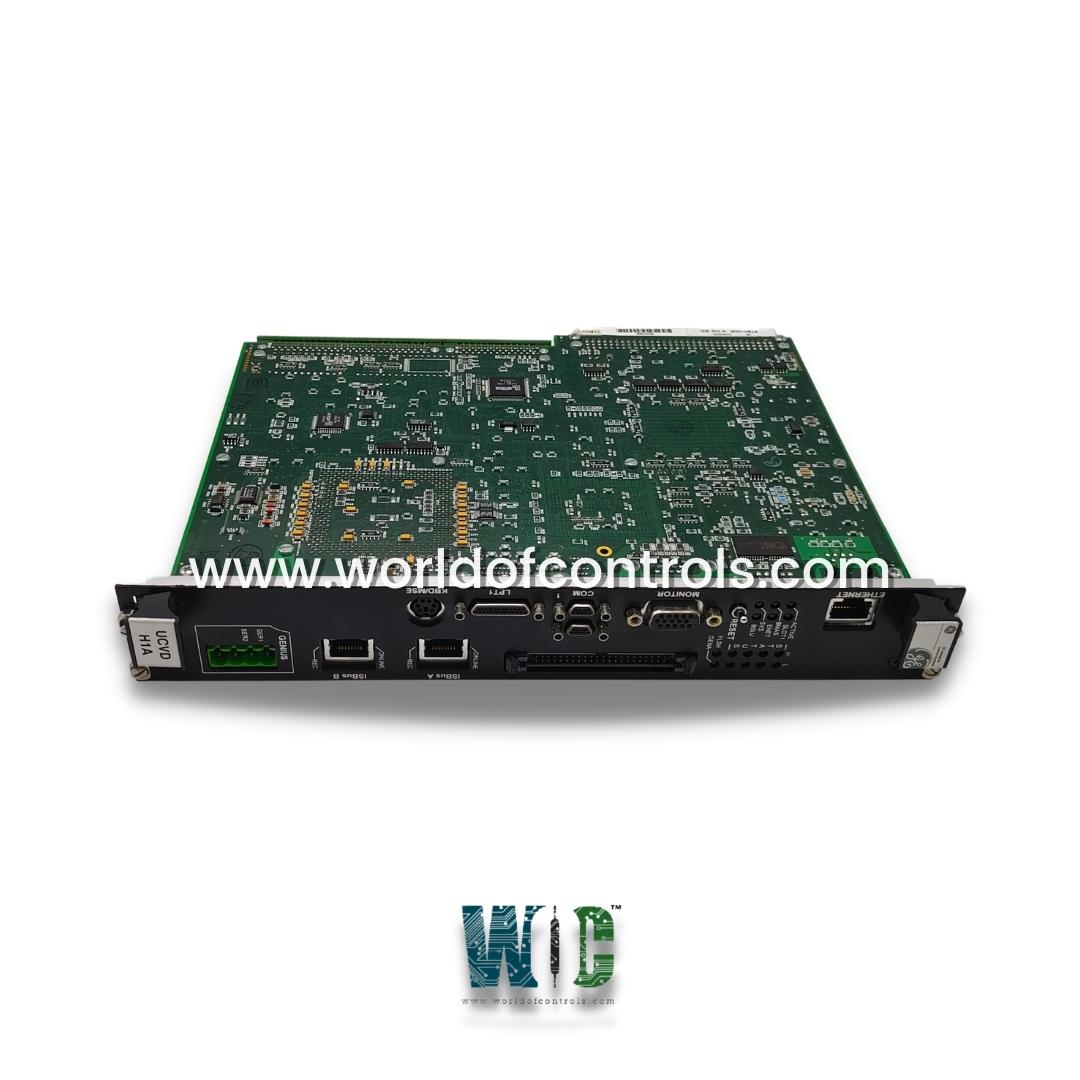
World Of Controls understands the criticality of your requirement and works towards reducing the lead time as much as possible.
IS215UCVDH2AA - Double-Slot Controller Board is available in stock which ships the same day.
IS215UCVDH2AA - Double-Slot Controller Board comes in UNUSED as well as REBUILT condition.
To avail our best deals for IS215UCVDH2AA - Double-Slot Controller Board, contact us and we will get back to you within 24 hours.
SPECIFICATIONS:
Part Number: IS215UCVDH2AA
Manufacturer: General Electric
Series: Mark VI
Product Type: Double-Slot Controller Board
Microprocessor: AMD-K6 300 MHz
Power supply voltage: 125 V dc
Voltage Range: 18 - 32 VDC
Memory: 16 MB DRAM
Operating System: QNX
Programming: Boolean
Ethernet Interface: Twisted pair 10BaseT
Power Requirements: +5 V dc, 6 A
Mounting: DIN-rail mounting
Technology: Surface mount
Operating temperature: -30 to 65°C
Size: 33.02 cm high x 17.8 cm
Repair: 3-7 Day
Availability: In Stock
Country of Origin: United States
Manual: GEH-6421H
FUNCTIONAL DESCRIPTION:
IS215UCVDH2AA is a Double-Slot Controller Board manufactured and designed by General Electric as part of the Mark VI Series used in GE Speedtronic Gas Turbine Control Systems. The UCVD is a two-slot board that operates with a 300 MHz AMD K6 processor, supported by 8 MB of flash memory and 16 MB of DRAM. It offers network connectivity to the UDH through a 10BaseT Ethernet port with an RJ-45 connector. The board features two columns of eight status LEDs that cycle in a rotating pattern during normal function. In the event of a malfunction, the LEDs flash a coded sequence to signal the specific error.
UCVD OPERATION:
The controller operates with software tailored for steam, gas, land-marine aero-derivative (LM), or balance of plant (BOP) applications. It is capable of processing up to 100,000 rungs or logic blocks per second, based on a standard mix of average-sized blocks. An external clock interrupt allows the controller to synchronize with the VCMI communication board’s clock within a margin of ±100 microseconds.
Data exchange between the controller and the control system database (CSDB) occurs via the VME bus through the VCMI communication board. In a simplex setup, this data includes process inputs and outputs from the I/O boards. In a TMR configuration, the data comprises voted inputs from input boards, direct inputs from simplex boards, calculated outputs awaiting voting by the output hardware, and internal state information that needs to be shared among controllers.
UCVD CONTROLLER RUNTIME ERRORS:
In addition to generating diagnostic alarms, the UCVB and the UCVD controller boards display status information on front panel LEDs. The Status LED group on these controllers contains eight segments in a two-vertical column layout as shown in the following figure. These LEDs display controller errors if a problem occurs. The rightmost column makes up the lower hexadecimal digit and the leftmost column makes up the upper digit (the least significant bits on the bottom). Numerical conversions are provided with the fault code definitions.
If the controller detects certain system errors (typically during boot-up or download), it displays flashing and non-flashing codes on these green status LEDs. These codes correspond to runtime errors listed in the toolbox help file. The following table describes the types of errors displayed by the LEDs.
WOC has the largest stock of OEM Replacement Parts for GE Speedtronic Turbine Control Systems. We can also repair your faulty boards and supply unused and rebuilt boards backed up with a warranty. Our team of experts is available round the clock to support your OEM needs. Our team of experts at WOC is happy to assist you with any of your automation requirements. For pricing and availability on parts and repairs, kindly contact our team by phone or email.
What is the UCVD and what are its key specifications?
It is a double-slot board equipped with a 300 MHz AMD K6 processor, 8 MB of flash memory, and 16 MB of DRAM. It features a single 10BaseT Ethernet port (RJ-45 connector) for connectivity to the UDH.
How does the UCVD connect to the control system network?
Utilizes a single 10BaseT Ethernet port with an RJ-45 connector for network connectivity. This connection facilitates communication with the UDH, ensuring seamless integration into the control system network.
What is the purpose of the double column of eight status LEDs?
The eight status LEDs serve as visual indicators of the board's operational status. In normal operation, these LEDs are sequentially turned on in a rotating pattern, providing a visual confirmation of the controller's healthy operation.